Is Direct-Air Capture just greenwashing?
Some envisage building machines to capture CO2 from ambient air (DAC) as the future, while others see it as just another clever form of greenwashing.
But which is it? Let’s take a look.
Contents
- What is Direct Air Capture (DAC)?
- What’s the current state of DAC?
- Some flagship DAC projects
- Mammoth (Iceland)
- Bison (Wyoming, US)
- Carbon Engineering/1pointfive (US, Canada)
- Global Thermostat (Colorado, US)
- DAC is going ahead, but should it?
- Self-renewing DACs: Vegetation & microorganisms
- Is DAC just a distraction?
- The oil and gas industry has to pivot
- Can’t pivot too fast
- Industry-style photosynthesis
- Is it just greenwashing?
- The Pragmatic Optimist
- The Coherent Pessimist
What is Direct Air Capture (DAC)?
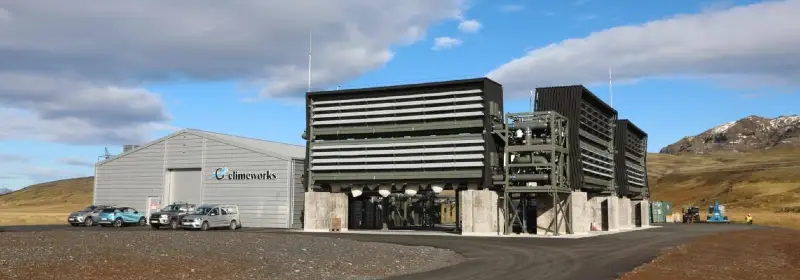
DAC stands for Direct Air Capture, which is a man-made technology that captures CO2 from the ambient air for later re-use in another form or for long-term underground storage.
It’s like the photosynthesising part of a plant, but instead of providing the captured CO2 to nurture a natural ecosystem, it provides a resource for industrial applications such as extracting more oil from reservoirs through injection (EOR) or more simply for enhancing crop growth in greenhouses or making fizzy drinks.
In other words, DAC is the geoengineering approach of capturing CO2 from ambient air at scale using man-made technologies.
What’s the current state of DAC?
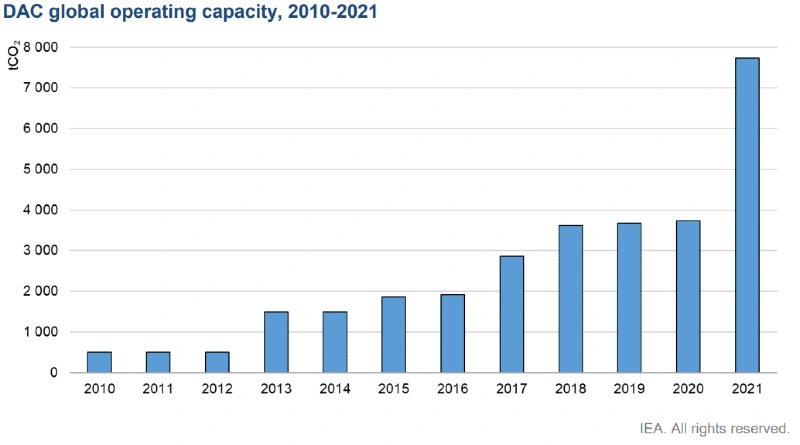
According to the IEA, there are currently 18 DAC projects operating worldwide, capturing >10,000 tons of CO2 per year.
This may seem like a lot, but it is actually only 0.001% of the 60 million tons per year rate that is needed by 2030 to meet the net-zero by 2050 targets.
However, the growth of DAC projects is astronomical due to aggressive incentives introduced internationally to deliver this technology as part of the climate action repertoire. The flagship example is the Inflation Reduction Act in the US.
Some flagship DAC projects
To give you an idea of the current state of DAC, let’s have a look at some of the most notable projects and technologies:
Mammoth – by Climeworks (Switzerland)
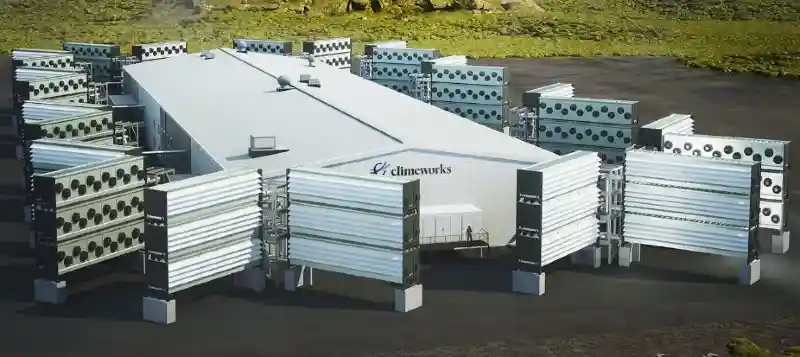
Founded in 2009, Climeworks is a company that specializes in DAC that has been operating Orca: the largest DAC facility in Iceland, which is drawing down 4,000 tons of CO2 per year and was built as a proof-of-concept for Mammoth.
Mammoth is under construction and is expected to be operational by 2024 with the ability to capture a whooping 36,000 tons of CO2 per year, almost four times as much as is being captured at present.
The project is ultimately another larger stepping stone to reaching megaton DAC capacity by 2030.
Bison (Wyoming, US)
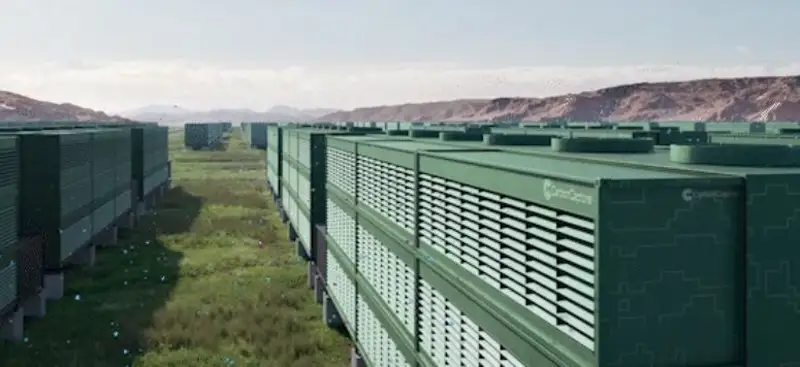
“Bison” aims to capture 5 million tons of CO2 annually for Enhanced Oil Recovery (EOR) of the nearby Wyoming oil fields.
In other words, the company seeks to capture CO2 to inject it down oil wells to recover the remaining oil while storing the captured CO2 in underground saline aquifers. Besides selling the CO2 for this utility, the company would generate carbon credits to help with its financing.
Their website says it’s the largest DAC project ever announced, which is expected to remove 1 million tons of CO2 as early as 2024, equivalent to taking 200,000 cars off the road.
It’s supposed to be able to scale rapidly after that because of its modular, containerised design, but the price of doing this is still quoted as high as $US 600 per ton of CO2 captured.
Wyoming produces about 5% of the US Oil from a variety of conventional and unconventional oil reservoirs distributed across the state, and the surrounding states of New Mexico and Colorado are among the top-producing states.
Carbon Engineering/1pointfive (US & Canada)
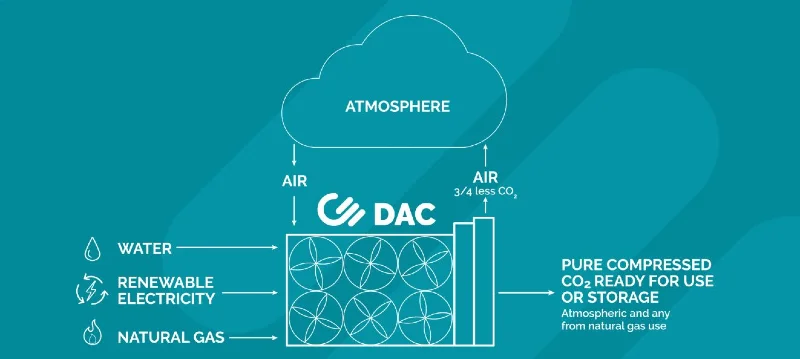
Carbon Engineering is one of the lead innovators in technology, and 1PointFive is building ambitious DAC projects in the US using the technology.
Their tech stack is derived from existing chemical CO2 air removal, which requires water, energy and natural gas to operate (supposedly, any emissions from the natural gas are within a closed chemical loop, so they are also removed).
Carbon Engineering claims that its systems can be built at an industrial scale and are capable of removing CO2 from the air at US$100 per MT when applied at large scales.
Curiously, they’re also developing “Air to Fuels” plans where the captured CO2 can then be used to make synthetic gasoline, diesel and jet fuel that can be used on existing vehicles.
Global Thermostat (Colorado, US)
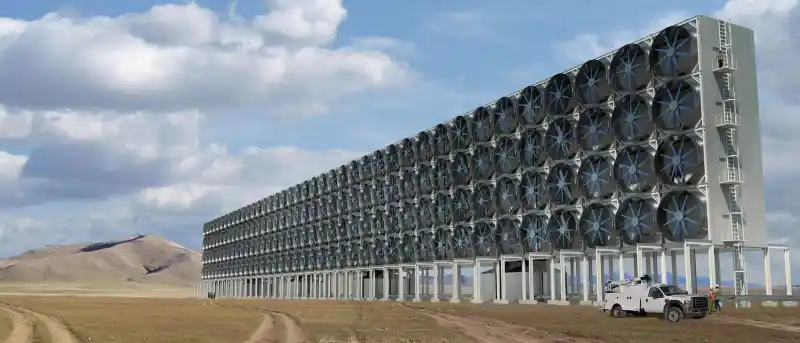
This cryptic US company headquartered in Colorado is developing a modular DAC with a unique tech stack compared to its competitors.
Their website does not give much more information besides them being secretly working on their pilot plant in the town of Brighton and that Exxon is one of their principal investors, suggesting they are likely not strapped for cash.
DAC is going ahead, but should it?
All the information above brings us to our next point: the very clear government and institutional support behind these projects provides both popular credibility and the financial firepower they need to deploy.
It’s no longer a question of IF the world will implement DAC, but when. Even the supposedly apolitical IEA has an entire section devoted to it on its website.
Building giant carbon-sucking machines is rapidly becoming the new normal, alongside EVs, commercial solar panels and heat pumps, but does DAC really merit being at the core of decarbonisation?
EVs are essential for lowering transportation emissions and renewables to clean up electricity production. But sucking carbon out of the air is already a job that vegetation and microorganisms (that we’re decimating) can already do.
Are we seriously going to re-invent the tree?
Self-renewing DACs: Vegetation & microorganisms
In reality, direct air capture technology has been at a very advanced stage for at least 3 billion years in the form of photosynthesising organisms and their accompanying ecosystems.
Photosynthesis is the process of turning CO2 and water into solid organic material and oxygen and is an integral part of the natural carbon cycle. In other words, it is freely available, self-renewing, auto-compounding carbon capture and storage that doesn’t even need us to thrive. In fact, our tampering tends to make it worse.
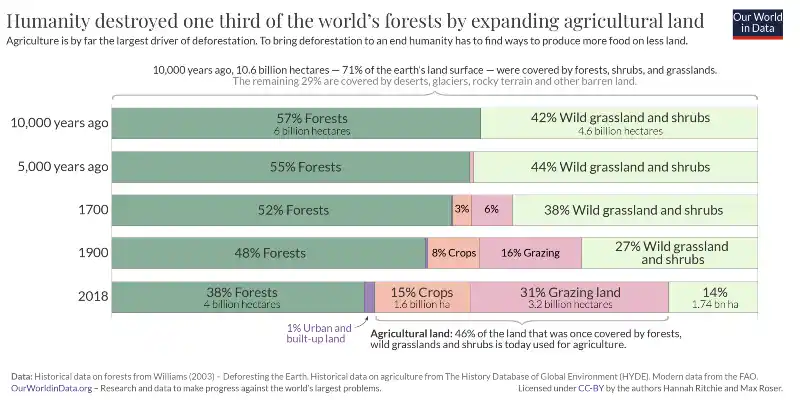
Natural ecosystems like forests, grasslands and reefs are intelligent and will adapt to changes by themselves. This includes cataclysmic volcanic eruptions, asteroid impacts and even destruction by humans. Once the pressure stops, forests, grasslands, and all ecosystems heal and turn into the giant carbon sinks that are ironically just what we need.
And surely it is much cheaper and simpler to encourage ecosystem health than using billions of dollars to build machines that do just this? Moreover, natural ecosystems come with the added benefits of water management, temperature regulation, biodiversity and even a buffer against pandemic diseases like COVID-19.
Is DAC just a distraction?
Given that nature can already fill this role effectively, is it really necessary to re-invent direct air capture?
Developing and building machines that involve global supply chains that will have plenty of unintended climate negative impacts across the lands and seas? Materials must be mined; components must be manufactured, transported and assembled, all of which come with an extra carbon footprint (which, we can’t even be sure, is being accounted for…).
This begs the question…who would have a vested interest in removing carbon in this non-intuitive way?
The oil and gas industry has to pivot
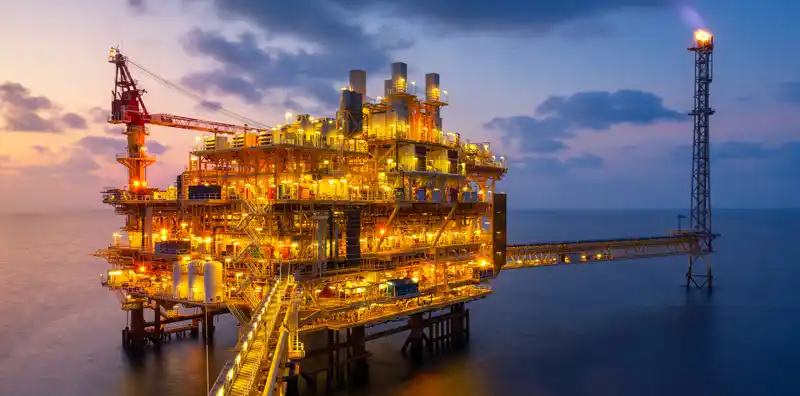
The fossil fuel sector is one of the largest industries in the world and has trillions of dollars worth of existing downstream and upstream assets used in the extraction, processing and distribution of these fuels.
Saudi Aramco alone has a market capitalisation of $2.33 trillion dollars, making it the 2nd largest company in the world, being almost entirely dedicated to oil and gas, ahead of better-known giants like Microsoft, Meta and Tesla.
However, having reached a global consensus that fossil fuels must be phased out as fast as possible, these companies are being forced to pivot into the business of reducing atmospheric CO2 instead of augmenting it.
The issue is that much of the value of these extractive companies lies in their sophisticated infrastructure, which has taken decades to build, and the rapid phasing out of fossil fuels may leave their assets rotting away faster than these companies can pivot.
Can’t pivot too fast
This may seem like a fair outcome given that the industry is well-known for its aggressive lobbying, but the reality is that leaving the industry hangin’ could potentially unleash a global financial crisis, only making matters worse on all fronts.
In fact, the reduced investment in fossil fuel infrastructure over the last couple of years is the main trigger behind the current energy crisis, which was worsened by the invasion of Ukraine.
If the industry collapses because funding goes elsewhere too fast, it may bring down the whole world with it.
So as sour as reality is, decision-makers actually need to make compromises with industry despite their solution being far from ideal compared to a more coherent solution of conserving and restoring forests and natural ecosystems, building low-carbon energy, etc.
Industry-style photosynthesis
The oil industry has been inadvertently capturing and sequestering carbon since the 1990s.
In order to squeeze out any remaining hydrocarbons from depleting reservoirs, captured CO2 is injected underground to pressurise the reservoir in a process called Enhanced Oil Recovery (EIR).
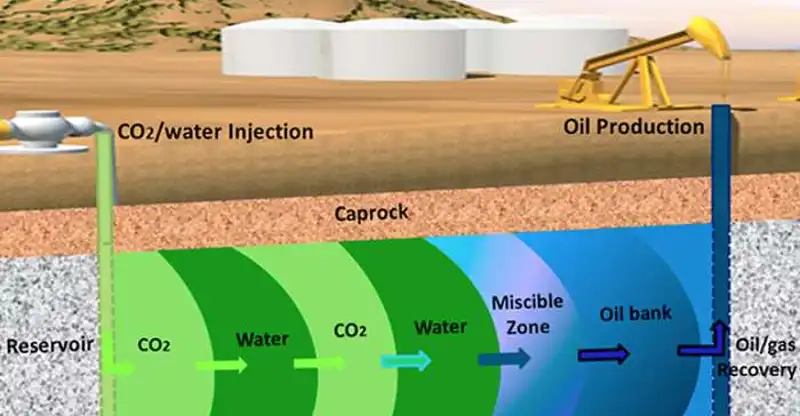
The injected CO2 remains sequestered within depleted reservoirs for an indefinite period, essentially acting like a carbon sink, giving the oil & gas industry a viable method to participate in the up-and-coming green economy without losing the utility of its infrastructure.
It’s still expensive at least $100s of dollars per ton of CO2 and requires additional investments to adapt the infrastructure and build the technology, yet it appears as the best compromise that can be reached.
There’s also some truth in the argument that technically, the process is simply putting back the carbon from where it originally came from (discounting the sulphur emissions, deaths by pollution and catastrophic oil spills, of course).
But DAC and carbon capture and storage (CCS) aren’t the only bets the industry is placing. Other use cases include:
- The production and distribution of blue hydrogen using fossil fuels and existing pipelines.
- Carbon Capture from point sources and underground storage.
- Underground green hydrogen storage.
Is it just greenwashing?
By definition, greenwashing is making something sound climate-positive when it actually isn’t, and there are many reasons why direct air capture may fit the bill:
- The cost and complexity of DAC intuitively exceed cheaper and simpler solutions such as preventing land use change, conservation and reforestation.
- There is an obvious benefit for the fossil fuel industry to capture carbon to inject back into wells.
- “Air to Fuels” and “Carbon neutral gas” are obvious oversimplifications of the real CO2 balances.
- The issuance of DAC carbon credits to finance these projects may downgrade their validity in funding regenerative projects that are much more climate positive.
- There is little mention of the risks of carbon storage (i.e. leakages, earthquakes).
However, the reality is that not reaching a compromise with industry giants may have even worse unintended consequences. We can look at it in two ways:
The Pragmatic Optimist
The fossil fuel industries are powerful and influential. If unable to participate in the up-and-coming green economy, the ensuing repercussions may place the world in an even worse position, with possibilities including a global financial crisis or switching to supporting authoritative regimes.
Embracing and financing DAC for the gradual transition from a fossil fuel-based economy to an electrified/hydrogen-based is a worthwhile compromise despite not being the optimal way of striving towards net zero.
Also, it may distract attention and financing from other more useful causes (i.e. conservation, reforestation), but not completely prevent it from growing. DAC is ultimately meant to be a complement to reaching our climate goals.
The Coherent Pessimist
The environmental emergency that the Earth faces is an existential crisis for civilization as we know it, and it goes far beyond reducing CO2 emissions.
There is biodiversity loss, insufficient water management, and increasing exposure to natural hazards, just to name a few. Protecting forests and natural areas and reducing industrial-scale agriculture can simultaneously reduce emissions while providing ecosystem services for free.
In this view, the distraction posed by DAC’s greenwashing is ultimately catastrophic and may lead to worst consequences in future, compared to forcing out oil & gas immediately and facing heavy consequences in the near term.
DAC takes away investment from green energy and the issuance of carbon credits used to fund projects with more benefits than just drawing down carbon.
We can’t negotiate with climate change, it will just happen, and focusing too much attention on DAC will ultimately make things worse.
External resources
- Carboncapture.com
- Carbonengineering.com
- globalthermostat.com
- Theverge.com – Orca DAC
- Theverge.com – Project Bison (Wyoming)
- climeworks.com
- Natural Center in Biotech
- Live Science
- The Guardian
- European Comission
- Emerging Tech Brew
- 1pointfive.com
- chron.com
- ourworldindata.org
- Investopedia
- TechCrunch
- The Guardian
- worldfinance.com
- phys.org

